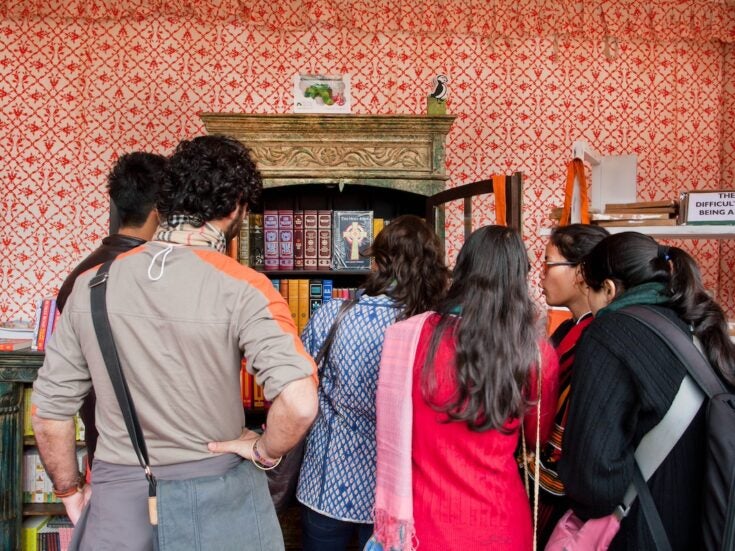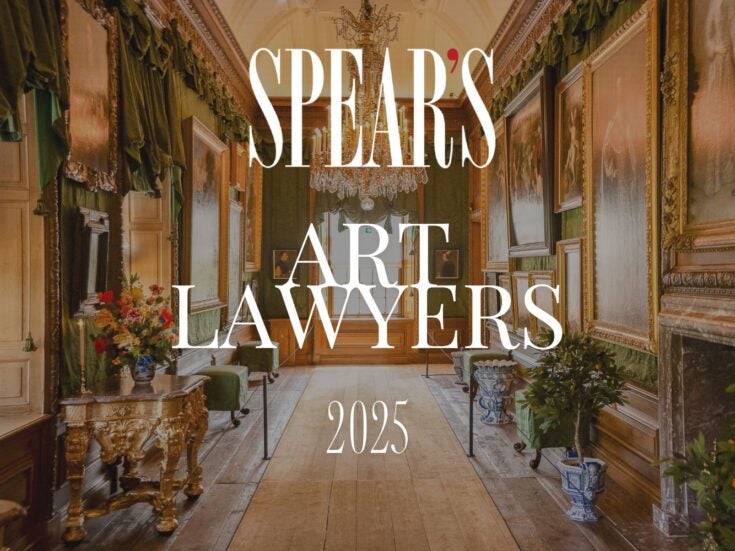
Gucci Wars: How I Survived Murder and Intrigue at the Heart of the World’s Biggest Fashion House
Jenny Gucci
John Blake Publishing
Review by Peter York
You’ll be expecting Tom Ford, of course. But there isn’t a word about him here. How could you publish a book about the Guccis in 2008 without a single mention of Tom Ford?
There’s no real luxury-trades style analysis, either. If you want to know where the Gucci loafer came from and who bought it, you’ll be disappointed by Gucci Wars. Jenny Gucci owned a lot of double-G clothes when she was married to Paolo Gucci and she says she helped him build the 1980s ranges. But she seems remarkably incurious about what made the brand so huge and important, what gave it the edge over the hundreds of little family-run, small leather-goods firms around Florence.
She’s only marginally better on the money — ie which Gucci family members got what, when. The only real boardroom story is about the bloody brawl that followed Paolo asking difficult questions about some mysterious Hong Kong employees. Instead, Gucci Wars is A Woman’s Story, Jenny Gucci’s account of how a dental nurse from Mill Hill with some singing experience at the light-classical end of things met and married a grandson of Gucci’s founder, Guccio Gucci. She was, she says, swept off her feet by his charm, sophistication and sexual magnetism when they met in 1976. It’s difficult to see how.
The back cover photograph shows Mrs G, a statuesque blonde, with her arms around her short, bald husband, seventeen years her senior. His isn’t a great look: he’s got a silly moustache, thick, compensatory hair to the sides and long, grey sideburns. Plus one of those blue shirts with integral white collars you’d only wear ironically. He looks like a Home Counties lawyer who’s made a bob or two specialising in insolvency. Inevitably, the great Mrs Merton/Debbie McGee question comes to mind: ‘So, what first attracted you to the millionaire Paul Daniels?’
And so much for the idea of Italian elegance. The pre-Ford pictures of the family, the houses, the clothes and everything else — Paolo looks like Manuel from Fawlty Towers with less hair — are unfailingly gauche. Here’s Paolo in a Max Wall comedy ‘Style Anglais’ tweed jacket in giant checks and a cravat, doing his idea of Anglo-gent.
Here’s Jenny in plum-coloured ruffles, a butterfly necklace and a Dynasty up-do. Here’s her father-in-law Aldo, looking like Rex Harrison but with a dinner jacket made entirely of that double-G trellis fabric. Jenny Gucci’s was the period, as she doesn’t explain, when Gucci expanded hugely, particularly in America, outside its original base and into Miami and Atlantic City and other towering citadels of naff.
The houses sound fascinating, too. Normans in West Sussex, a 16th-century house heavily redone in the 1930s, was painted in shiny, metallic, lilac Volkswagen car paint, while their New York apartment was all deep maroon with green highlights. But there was masses of money being splashed around everywhere — millions when they meant something, private planes when they counted — and the former Miss Puddefoot clearly took to it fast.
Where Gucci Wars is riveting is on the whole Italian business-family side of things. While Jenny was married to Paolo Gucci, the whole family was engaged in constant and apparently pointless litigation — father against son, cousin against cousin.
The smart New York lawyers they used for decades must have found them completely maddening but hugely profitable. There were new plots and temporary alliances every other month, and a satisfyingly international backdrop to it all: Sussex, New York, Florence, upstate New York, Beverly Hills. It’s all very Dynasty.
But so is the writing. Forget the brand, the business and the design, the whole Woman’s Story and the Social Story — English suburban girl marries into mad, rich international Italian family — would have been promising enough in its own right if it hadn’t been ghosted. Ghosting — the kind used by mature ladies in the entertainment business — puts a screen of clichés and genteelisms between you and the action.
You’ve literally read it before, you know the constructions, that uniquely ghosty way with tenses; the ‘little did I know back then in 1977’ or ‘that fateful autumn day in Morocco’ bits of clunky plot management. Ghosting cuts out any real emotion or accurate social insight in favour
of ready-mades.
The story is naturally lurid enough. Jenny gets snowed under with fancy clothes before they’re married, and draped with minks and sables and OTT jewellery after their marriage in 1977 in Haiti (Haiti!). But when their daughter Gemma is born in 1983, everything changes. Paolo has screaming jags about anything from the arrangement of the silver in a drawer to the wrong menu. He gets $40 million in a family settlement but won’t send her old parents on a cruise. Then, of course, he has an affair with his mousey, married, Sussex-based English secretary (lots of action with hotel telephonists).
The divorce struggle is fantastic. Paolo, mad as a snake and daft as a brush, thought he was above the law and a succession of nasty horse’s-head-in-the-bed plot devices follow. Cars are tampered with. Workmen break up Jenny’s flat. The horses in Sussex and their upstate New York stud farm are starved to death. Most shocking of all for a British readership, Paolo instructs a minion to shoot their daughter’s pony, Beatrice (he can’t bear to do it).
And there’s murder. In March 1995, Paolo’s cousin Maurizio, the last Gucci to run the firm before selling out to Investcorp two years earlier, was shot dead in the street in Milan. It looked like a pro job. In proper Borgia style, his wife Patrizia was convicted of ordering the hit, helped by her clairvoyant and a Sicilian who ran a pizzeria. Later that year Paolo Gucci died of liver failure in St George’s Hospital, Tooting (he’d had hepatitis A since 1974). Jenny didn’t go to the funeral.
Paolo’s final divorce strategy was to claim bankruptcy and squirrel the money away in Swiss bank accounts and offshore companies. His wife, after spending $1.3 million on lawyers, hasn’t got any of it. But she has kept one useful asset — her Gucci name. She’s developing a line of mid-priced sheets, towels and bathroom accessories in ‘a beautiful Renaissance/Florentine style’. The company, of course, is suing her.







